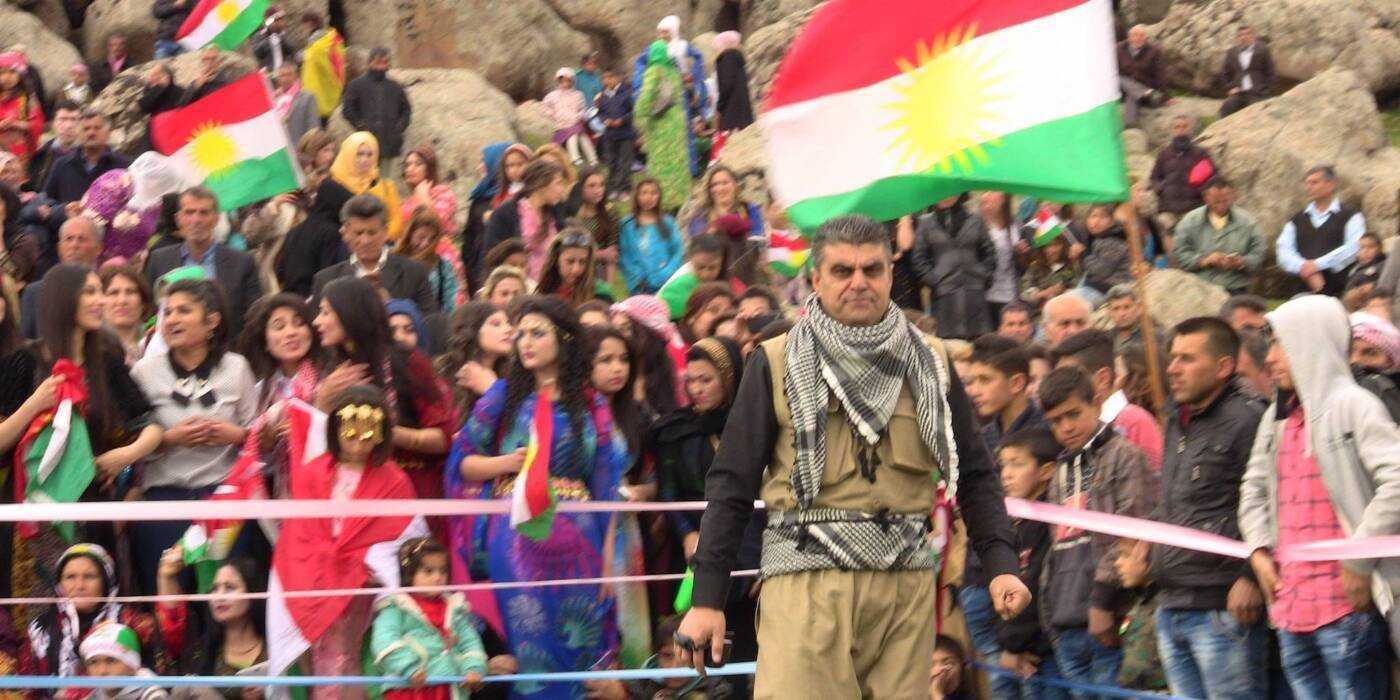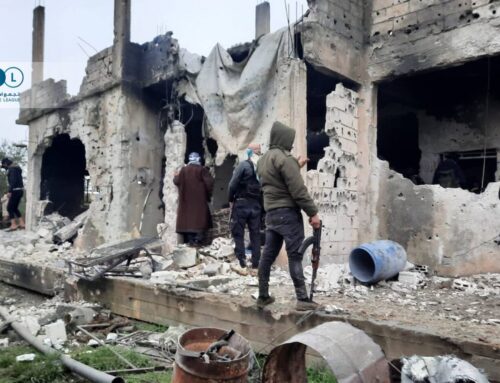Authoritarian tendencies mar the AANES’ quest for recognition
Arbitrary arrests targeting journalists and opposition members are on the rise in territories controlled by the SDF, which faces mounting popular dissent and intra-Kurdish tensions.
22 July 2021
AMMAN — On Sunday, July 18, the Autonomous Administration of North and East Syria (AANES) launched an online campaign calling for UN recognition of the areas under its control. The status sought by the AANES at the UN is unclear, but the campaign symbolically coincides with the anniversary of the Rojava (literally means western Kurdistan; the Kurdish name of Syria’s northeast region) Revolution that led to the establishment of the AANES.
However, nine years on, the democratic dreams of the Rojava Revolution have largely faltered while the AANES seems to be shifting towards increasing authoritarianism. Indeed, the launch of the recognition campaign was marred by the alleged arrest, on July 17, of four members of a Kurdish opposition party – including three media activists- by militias affiliated with the Democratic Union Party (PYD) leading the AANES. The PYD did not claim responsibility for the arrests nor issue an official statement denying its involvement.
This is the latest in a series of intimidation attempts targeting opposition members, civil society activists and media workers in northeast Syria, against a backdrop of intensifying intra-Kurdish tensions.
A shrinking media space
The four individuals arrested were low-profile members of the Syrian Kurdistan Democratic Party (KDP-S), a branch of the Iraq-based Kurdistan Democratic Party (KDP), a long-standing rival of the PYD. Among those arrested was Barzan Hussein, a member of the Syrian Journalists Association.
“We do not know why he was arrested or where he is being held,” a member of Hussein’s family, who asked to remain anonymous, told Syria Direct. “We expect that he was arrested for working for a TV channel that operates without authorization from the AANES.”.
Hussein’s arrest follows that of at least six media professionals arrested or kidnapped this year by the Syrian Democratic Forces (SDF), the armed wing of the AANES, or armed groups affiliated with the PYD, according to the NGO Reporters Without Borders (RSF).
These arrests targeted journalists and media outlets critical of the PYD or affiliated with its political rivals.
“The PYD committed nine out of the 27 violations that we documented in the first half of 2021. In turn, the SDF committed four violations during the same period, meaning that together, they are responsible for nearly half of the violations committed [against journalists],” Ibrahim Hussein, the Director of the Syrian Center for Journalistic Freedoms, told Syria Direct.
Furthermore, on June 20, the AANES closed the northeast Syria bureau of Kurdistan24, a media outlet based in Iraqi Kurdistan and closely associated with the family of Masrour Barzani, the current Prime Minister of the Iraqi Kurdistan region.
Intra-Kurdish strife
The current repressive attitude is unfolding against the backdrop of intensifying intra-Kurdish strife, affecting media both in northeast Syria and Iraqi Kurdistan.
“Because I am not politically with the PYD, they were always making problems for me even if I did not write anything against them,” Kamiran Sadoun, a journalist arrested on June 16 by the SDF and subsequently released, told Syria Direct. “Any story against the Autonomous Administration and [groups affiliated with the PYD], they will close the channel or stop the journalist,” Sadoun added.
Freedom of expression is similarly under fire in neighboring Iraqi Kurdistan, led by the KDP. Between March 2020 and April 2021, the Office of the United Nations High Commissioner for Human Rights (OHCHR) documented 33 cases of arbitrary arrests and violations of arrest procedures targeting journalists or activists. Five journalists were also jailed last March in relation to their coverage of anti-KDP protests.
Over the past weeks, the KDP-S has accused the Asayish, the Internal Security Service, of kidnapping several of their members. On the other hand, the AANES denounced the arrest of one of its representatives in Erbil and two PYD members by the Iraqi Kurdistan authorities on June 10.
Tensions between the Iraq-based KDP, dominated by the Barzani clan, and the PYD, which dominates the AANES in northeast Syria, are nothing new. The PYD is widely seen as a Syrian emanation of the Turkey-based Kurdistan Workers’ Party (PKK), a historical rival of the KDP.
This war of detentions can be read as “a sign of intra-Kurdish tensions, mostly a result of increased tensions between Peshmerga forces [the armed wing of the KDP] and the PKK in the border regions [of Iraqi Kurdistan] and increased Turkish military operations against the PKK this summer,” Wladimir van Wilgenburg, a journalist and co-author of “Accidental Allies: The US–Syrian Democratic Forces Partnership Against the Islamic State,” told Syria Direct. This escalation “even led to fears of a Kurdish civil war after clashes in which PKK fighters and Peshmerga fighters died,” van Wilgenburg added.
Plummeting popularity
The increasingly authoritarian methods of northeast Syrian authorities coincides with mounting popular dissent against the AANES.
In May, the AANES’ decision to increase fuel prices provoked deadly protests in Qamishli and other SDF-controlled cities, prompting authorities to reverse the price hike the next day. Prior to this, the AANES faced growing pushback against military conscription and its educational curriculum. In addition, the arrest of dozens of teachers who implemented curricula other than the one imposed by the AANES sparked protests, which led to further arrests of teachers and students.
These internal challenges have resulted in an increasingly restricted space for journalists. “Oil and military issues like conscription, for example, are two topics that no one from [the Autonomous Administration] will be happy to talk about,” Sadoun added, “and will not give journalists any access.”
The authorities have responded to criticism with a heavy hand. In the first half of 2021, 369 cases of arbitrary arrests committed by the SDF have been documented by the Syrian Network for Human rights (SNHR). The SNHR further documented several cases of torture in SDF prisons and noted “a steep escalation of arrests, enforced disappearances and the suppression of freedoms in the areas under SDF’s control” since the beginning of the year, “in connection with the people’s criticisms of its policies in the areas under its control.”
On June 30, the death of KDP-S member Amin Issa al-Ali while in SDF custody polarized public opinion. While pro-KDP media echoed allegations that al-Ali died under torture, pro-PYD media pushed the official version of death by stroke.
Despite its worsening human rights record, the AANES still enjoys a privileged relationship with Western democracies, being the indispensable local partner of the American-led international coalition against ISIS.
“The US does follow any cases of human rights abuses both in Iraqi Kurdistan and northeast Syria, so there will be pressure on any potential human rights violation,” van Wilgenburg noted. However, “without a Kurdish dialogue going on, I doubt [KDP-S members] will be released.”
In the meantime, journalists and activists will continue to pay a high price in this increasingly red-taped political landscape.
“What is the link between the arrest of people affiliated with Qandil [mountain on the Iraqi-Turkish border where the leadership of the PKK reside] and the arrest of [three KDP-S members who are all] civilians and media people?” Nuri Primo, a leader of the KDP-S, asked.
“What happened on Saturday is an episode of silencing, of political arrest, of the rule of one party, or the rule of one group,” he told Syria Direct.







